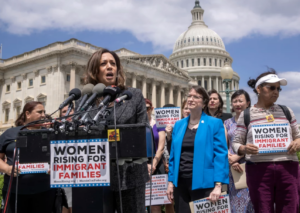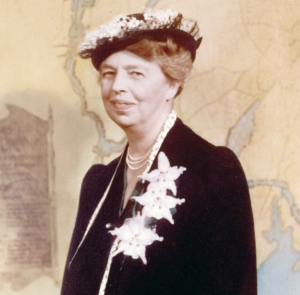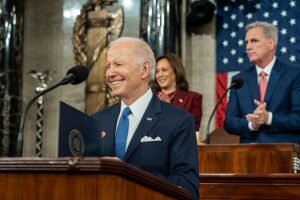Under Different Kinds of Attacks: Syrian Refugees in Lebanon

 The camp in Dalhamiyeh is among hundreds of informal clusters of Syrian refugee tents in the Bekaa Valley | Photo courtesy Dylan Collins/Al Jazeera
The camp in Dalhamiyeh is among hundreds of informal clusters of Syrian refugee tents in the Bekaa Valley | Photo courtesy Dylan Collins/Al Jazeera
When a refugee flees a civil war to a neighboring country, the assumption is that he or she is finally safe from a life-threatening situation. As more than a million Syrian refugees have fled to Lebanon since 2012, however, they are facing a new threat of increased anti-refugee sentiment among the Lebanese population. While this increase is due to a combination of several factors, two stand out above the rest: the deaths of Hezbollah fighters in Syria and anti-refugee sentiments perpetuated by state policy and officials. State-led factors for anti-refugee sentiments include government restrictions on the legal status of refugees, discriminatory official discourse against the presence of refugees, state officials naming the refugees a security threat, imposing curfews in many towns and villages, and limited accountability for repeated physical assaults. Violent incidents of attacks and assaults have taken place after major events, such as the deaths of Hezbollah fighters in Syria, a terrorist bombing taking place, and ISIS beheading Lebanese soldiers in 2014. The reaction of the local communities towards these events manifests as revenge or anger against Syrian refugees, starting with forcing refugees to leave the village or town, and leading to physical harassment and assaults.
The bodies of deceased Hezbollah fighters have been arriving from Syria to their hometowns in Lebanese villages since 2013. Two Lebanese soldiers were killed by ISIS on the Lebanese-Syrian border in 2014. A terrorist suicide attack hit a Christian village in Lebanon in 2016. The multiplicity of major incidents in such a short timeline has transformed the collective anger of the local communities into attacks on the refugees who happen to be living there.
After 2000, when the Israeli army left Lebanon, the role of Hezbollah became subject to debate. Hezbollah opponents in government began to question whether Hezbollah should continue to exist as an armed militia in a sovereign state while also working as a political group in parliament. In 2008, Hezbollah took over Beirut and it was transformed from being a resistance movement to a sectarian political party with an armed militia involved in the domestic dispute. Hezbollah made an alliance with Syria and Iran and, when the uprising took place in Syria, Hezbollah was involved in supporting the Syrian government. After this involvement, Hezbollah became a regional player.
The number of Hezbollah fighters in Syria is estimated to be between 8,000 and 20,000; however, Hezbollah’s leadership has given no official number, even as the number reached 865 from September 2012 through February 2016. This high level of involvement in Syria by Hezbollah has driven many Lebanese Hezbollah supporters to disliking Syrian refugees. The attacks against Syrian refugees in Hezbollah areas were not only a result of the growing number of deaths, but also caused by an accumulation of events and discourse from the Lebanese government.
On a demographic level, the density of Syrian refugees to the local population is the highest in the region. Most of these attacks take place in southern Lebanon in Muslim-Shiite areas, where Hezbollah fighters come from. Syrian refugees coming to these areas are typically Muslim-Sunni. The sectarian and religious component in the Syrian crisis extends to Lebanese domestic politics as well. The Sunni vs. Shiite/Alawite division is clearly present among Lebanese political parties, and also among average citizens.
The anti-refugee sentiments perpetuated by state policies and officials were demonstrated on January 2015 with the new visa regulations for Syrian refugees. Before 2014, Syrians were allowed to enter Lebanon through a voucher, and free of charge with their Syrian ID for an initial six-month stay. Their stay could be renewed for another six months for free, but subsequent renewals required a fee by the Lebanese General Security. In 2015, new regulations came out from the Lebanese General Security to differentiate between Syrians entering the country with entry visas and residency permits. Despite the vague and unclear nature of the announcement, it has become the most important concern for Syrians refugees trying to stay legal in the country. The process was complicated, starting with obtaining several forms and official documents, and with requirements often varying from area to area. Those who had already entered the country illegally faced a longer and even more complicated process. The new policy required a $200 renewal fee for every family member every six months.
A lack of residency status created problems for Syrians trying to access basic services. Even Syrians registered with the United Nations High Commissioner for Refugees (UNHCR) did not automatically receive residency status. UNHCR tried to sponsor refugees, but due to the vagueness and variation of the rules, no one knew exactly how the system worked. Many reports documented the limited access to legal documents, especially for the refugees who entered the country illegally—approximately 88% of the refugees, according to UNHCR. No residency means restrictions on movements, fear of crossing checkpoints, fear of being arrested or detained at checkpoints, fear of kidnapping and violence, lack of accessing to medical services, and exposure to abuse and exploitation. For example, if a Lebanese citizen attacked a Syrian without residency, the Syrian, rather than the Lebanese, would risk jail time if they went to the police to report the attack.
New banners started to appear in the small towns and villages in Lebanon telling Syrian workers to not gather in groups or go out during the night. In 2014, at least 45 towns across the country were imposing curfews on Syrian refugees. For example, in Nabatia, Syrian refugees were banned from leaving their homes by the municipal police during Ashura, a major 10-day Shiite religious event. This happened again after a suicide bombing attack in 2016. According to Human Rights Watch, a Syrian refugee was stabbed three times because he went out to shop. Municipality police forces implement curfews from a decision given by town mayors for security reasons. Local towns and cities have created monitoring groups and in some cases town youths have armed themselves and enforced the curfew. If a refugee is stopped during curfew hours, they will first be given a warning. If they are caught again, they will be punished according to the rules of each town.
Due to the government’s plan to address ISIS’s presence along the Lebanese-Syrian border, many refugees living in ITSs (Informal Tented Settlements) were relocated while the Lebanese military carried out repeated raids to look for weapons and terrorists among Syrian refugees. The most extreme raid and mass arrest took place in Arsal in 2017, during which four Syrians died. No independent investigation took place, however, and the official army response was that they died while in detention from chronic illnesses.
Lebanese politicians have been wary of the security threat posed by refugees due to experiences with Palestinian refugees following the 1975-1991 civil war. This historical sentiment is now focused on Syrian refugees as these leaders prioritize returning Syrians back to Syria. Michel Aoun, the current president of Lebanon, stated in 2013 that, “Syrian refugees are a serious danger…and everyone knows that refugee crises start with people asking for help and end when they revolt on you.” In 2013, Internal Security Minister Marwan Charbel also declared that “Syrian refugees are threatening the security situation in Lebanon.” While Gebran Bassil, the current Lebanese Foreign Minister, has a clear position against the Syrian refugee presence, he said “The state and the government are incapable of addressing the matter, and I am telling you that the municipalities have huge responsibilities—one of them is to keep security.” At another event, he said, “To whoever is advising us and telling us how beneficial the Syrian refugees presence is on our land, should step up and take them and get the benefit.”
This official response has encouraged anti-refugee sentiments, leading to physical assaults and attacks. After the Grad rockets attack in Dahet Aljounbeh, Beirut in 2013, residents felt anger and suspicion towards Syrian refugees living there. They did not know the political background of the refugees and some labeled them as terrorists. A group of Lebanese described as supporters of Hezbollah beat Syrians using sticks, injuring 5 people. One of the victims said that the attackers warned them to leave the area and that they were not welcome there.
As a result of ISIS kidnapping Lebanese soldiers in 2014, some Lebanese citizens in Bekaa forced refugees in the area to leave. Some of the refugees were jailed or detained in the middle of the street for some time, and later released by the Lebanese army. While in Aytaroun, in the south of Lebanon, 11 Syrian refugees were attacked by the town residents after the news emerged of the death of a local Hezbollah member. Similar attacks took place again in Deir el Ahmar to the refugee camp as a reaction to the bomb attack in Qaa. After the Syrians with valid residency permits started a peaceful strike against these attacks, the municipality responded by telling them to get back to work or be deported. Based on a survey on perception of Syrian refugees in Lebanon, conducted by Institut Des Sciences Politiques-USJ in 2014, 69% of the Syrian refugees who were personally attacked didn’t do anything, 14% changed their location of living or their behaviors, and 17% confronted the attackers.
The military involvement of Hezbollah in Syria, the legal obstacles to get a residency permit, the curfews and army raids, and the anti-refugee political discourse are all important factors contributing to an increasingly hostile environment for Syrian refugees in Lebanese host communities. The future for the Syrian refugees in Lebanon doesn’t look very promising. Will Syrian refugees return to Syria as one of the options they have? Or will they consider migrating to less hostile environments? After Assad gains more control on the country, how will the Lebanese government facilitate the return of these refugees? What will the future relationship be between Syrians and Lebanese? How does the scale of hostility measure up, compared to what it was only two years ago? The two neighboring countries have deep, structural problems, and what has happened regarding the refugee crisis will add another layer of complexity to understanding the relationship between the two populations. This layer might not appear in economic or market studies for future investments, but it will undoubtedly have an impact on the success of any future relations.
Marianna is an MA student in politics at NYU. She has worked with international non-profit organizations since 2010 inside and outside Syria. Marianna has conducted field research about conflict analysis, informal justice mechanisms, and transitional justice concerning Syrian refugees and host communities in the Middle East and North Africa.






